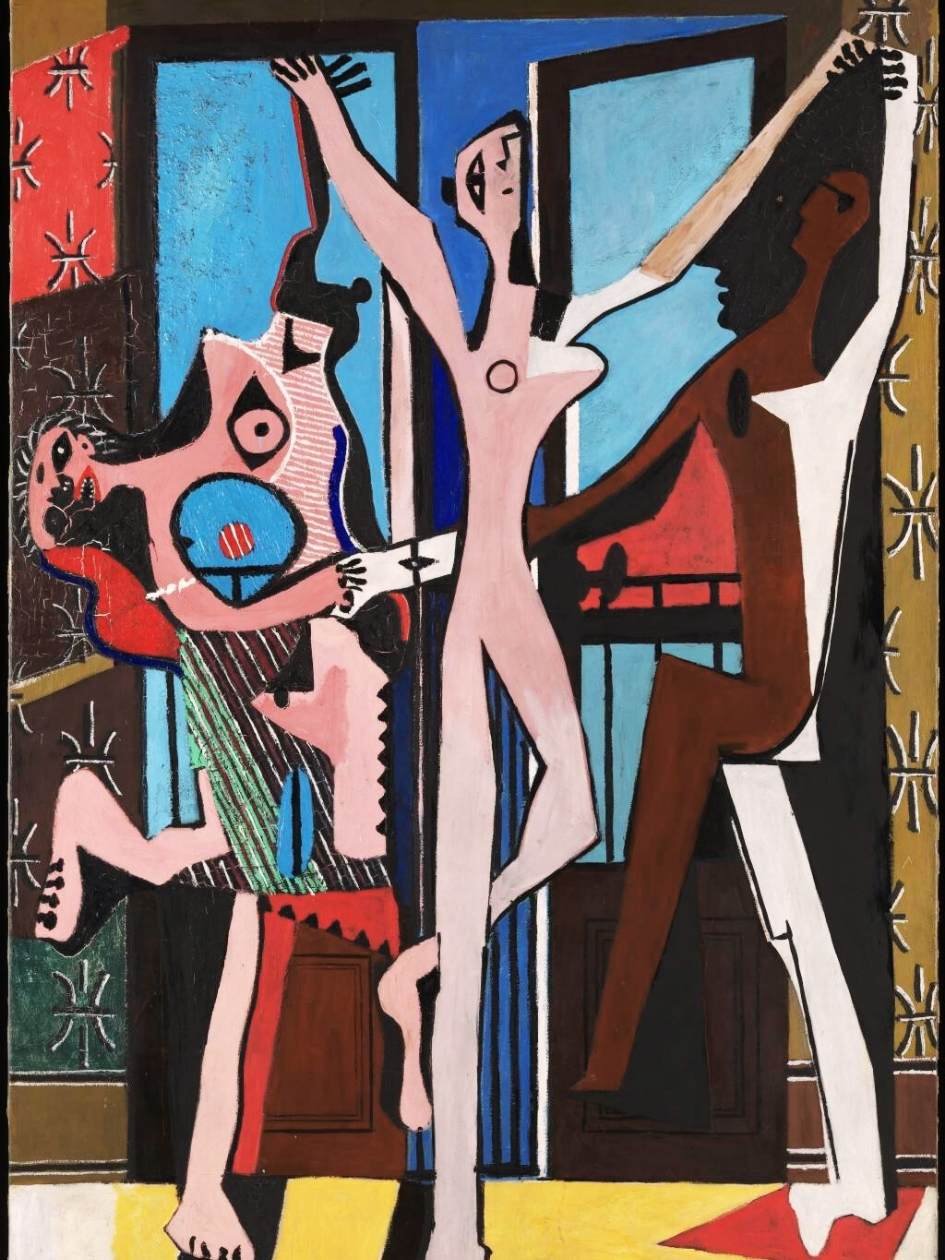London, Tate Modern
This painting was a product of one of the frequent periods of reassessment which punctuate Picasso’s art. Since the end of the Great War, whilst continuing to produce Cubist works, he had also become involved in a general revival of interest in classical forms (dubbed by Jean Cocteau as ‘the return to order’). The Three Dancers, a large painting with life size figures, represents a clear break with the predominantly classicist output of the recent past and in many respects marks a return to the jarring ‘primitive’ imagery of Demoiselles d’Avignon, painted in 1907, and inspired by African art. It was immediately hailed by André Breton, leader of the recently emerged Surrealist movement and as a result of their overtures Picasso made another break with the past and agreed for the first time to participate in a collective exhibition, showing some Cubist pieces in the first Surrealist group show.
“You can buy this unique work of the artist with canvas print and poster options or you can browse our large collection of his other artworks: Three Dancers Poster Print or Pablo Picasso Art Prints“
Since 1916 Picasso had also been closely associated with the Ballets Russes, collaborating with Diaghilev, Eric Satie and Jean Cocteau. Through these connections he met the dancer Olga Koklova whom he married in 1918. So the theme of dancers was a natural choice during this period. But the work is hardly a celebration of poise and graceful movement. In fact the character of the painting changed as Picasso was working on it, for during its gestation he heard of the death of his friend Ramón Pichot who was then introduced into the composition, silhouetted in profile behind the right-hand dancer. Pichot’s death triggered painful personal memories for Picasso dating back to an earlier tragedy when in 1901 a close friend and fellow painter Carlos Casagemas had committed suicide. The cause of Casagemas’s despair was rejection by his lover Germaine who may have left him because he was impotent. Soon after this traumatic event Germaine married Pichot who had accompanied Picasso and Casagemas from Barcelona when all three had made their first extended visit to Paris.
Therefore The Three Dancers might be seen as a dance of death. The female figure on the left of the picture may be Germaine, her grotesque teeth and exposed breasts symbolising her role as a man-eater. The ghostly Casagamas had already made an appearance in a number of paintings including the Blue Period work La Vie. It is probable that he now makes another posthumous appearance as the central figure in this painting. Is he dancing or is he crucified — trapped between Germaine and Pichot?
Evidence of the importance of this work to the artist (because of this personal and biographical content) is provided by the fact that it remained in his possession for forty years until he sold it directly to the Tate.
Contemporary Works
1924 Gwen John: Interior (Rue Terre Neuve), Manchester, City Art Gallery
1925 Paul Signac: The Lighthouse, Groix, New York, Metropolitan Museum of Art
Categories:
- Cubist Art Prints
- Expressionism
- Primitivism

